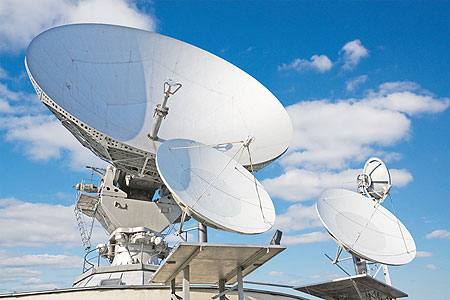Maybe you have ever visited an internet café with the hope of making a quick glance through your emails or a quick web search only to end up waiting indefinitely for the “network”. Maybe you have been lucky to get connected only to wait for several minutes to logon and ended up with a message like “this page has expired” or a similar one.


Maybe you have ever visited an internet café with the hope of making a quick glance through your emails or a quick web search only to end up waiting indefinitely for the "network”.
Maybe you have been lucky to get connected only to wait for several minutes to logon and ended up with a message like "this page has expired” or a similar one. Then you probably stormed out of the café throwing four-lettered curses at everybody but yourself.
The other day I sent an SMS to a friend at 9:00 p.m and he received it at 3:00 a.m in the morning. You should have seen his reply calling me all sorts of names for disturbing his sleep! You probably have ever tried to send a New-year SMS to your loved one only to learn the next day that it was never delivered or was delivered the next day.
If you identify with such scenarios and wish to understand why they happen then bolt up and read on. What you have experienced is a phenomenon known as Network Congestion.
From a user point of view, its defined as a user-visible degradation of network performance. From a technical point, congestion may be said to occur when available network assets used to establish network communications are not enough to establish all required communications. In other words, congestion occurs when the demand for network assets is greater than the supply.
Before we get too technical, I believe that it is prudent that we understand what a communication network is. It is not easy to define a communication network in a few words mainly because of its complicity. I will, instead, endeavour to give an overview of what a communication network consists of and what it does rather than trying to define it.
In general terms, a communication network could be defined as an infrastructure of interconnected communication devices used for exchange of information between different users. The communication devices include telephones, computers of different types, a communication link and switching devices. This is a very simplistic approach in which communication devices have been considered as black boxes, which is not the case.
Communication networks are much more complex than this and have evolved from the early telephone based networks to modern day computer based ones.
Considering a computer based network, congestion could be understood better by considering the phenomenon of end-to-end packet data transmission in a network, or network throughput. In this case, congestion could be defined as a situation whereby the number of data packets being transmitted through a network approaches the packet handling capacity of that network.
In other words congestion occurs when the network throughput approaches zero. This is analogous to a highway with the numerous cars as data packets. When congestion occurs all cars come near to a stand-still.
Causes of congestion may be either due to insufficient network assets at a particular time or pushing too many packets into the network at the same time, the later being user dependent while the former is equipment dependent.
When congestion occurs the following scenarios may manifest:
• In the extreme cases the packets may be dropped. This may result into failure to establish the communication and, therefore, a waste of upstream transmission capacity. This scenario occurs mainly during peak hours of communication.
• In less extreme cases the packets may be rerouted through other available assets causing multi-hop paths that may result into transmission timeouts or delays due to re-transmissions.
Irrespective of whatever may cause network congestion, network congestion will always frustrate users and destroy their confidence in a service provider. In subsequent articles we shall see how you and I can contribute to our own frustrations and what we can do to help alleviate the situation.
The writer is the Managing Director of Cornerstone Africa Ltd.


